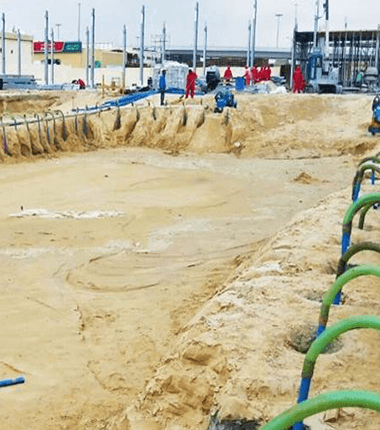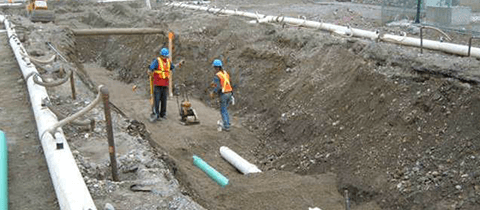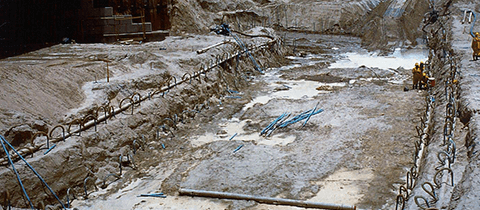


Well Point System
A WellPoint system is the oldest practical method of pre-drainage, and is still one of the most versatile methods, being effective most types of soil, whether pumping a few gallons per minute (GPM) in fine sandy silts or many thousands of gpm in coarse sands and gravels. The basic components of a wellpoint system include: a wellpoint pump, header piping, and the wellpoints themselves. The wellpoint pump consists of several components that serve three functions:
1) to pump air (create vacuum),
2) to pump water, and
3) to separate the air from the water.
The wellpoint pump is tied into a level header manifold that is conveyed alongside the excavation. The header applies the vacuum to a series of individual wellpoints and conveys the water lifted from the wellpoints to the pump. The wellpoints are, in essence, well-like devices constructed with a screen intake and usually a filter pack, which draw the water from the ground by the suction generated at the pump. Wellpoint systems are the most suitable in shallow aquifers where the water level need to be lowered no more than 5 to 6 m. Beyond that depth, multiple stages are required because of the suction lift limitation.
